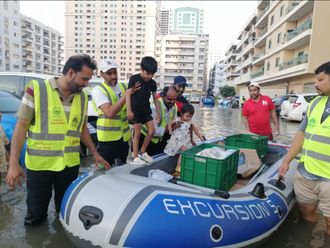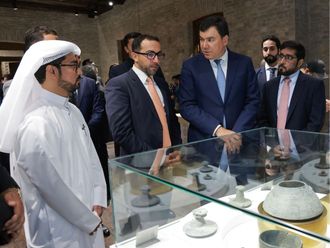
Dubai: It could only take a moment of your inattentiveness, for your child to suffer a burn injury and get scarred for life.
Doctors say it remains the most common reason why children — some as young as 18 months — end up in the emergency room for burns.
“It only takes one second for water at 70 degrees Celsius to cause third degree burns,” Dr Abdelkarim Khedhair from the Gulf Burn Society told Gulf News on Thursday, ahead of the 2nd Gulf Burn Management Conference happening this weekend.
“The burn takes a second to occur, but it months to heal and it can leave a scar for life,” he added.
Dr Khedhair, a Saudi-based plastic surgeon who specialises in reconstructive surgery, particularly for burns, is in the UAE for the conference to be attended by doctors and health professionals to discuss the latest in the burn management and prevention.
Educating the public — especially parents, guardians, and child carers — is the most effective means to prevent and manage burns, Dr Khedhair said.
This is because 70 to 75 per cent of burns happen in the home and three out of 10 victims are children, Dr Khedhair said, quoting studies and statistics from Gulf countries, including the UAE.
The kitchen, dining area, and bathroom remain the top three hotspots in the house, where children could easily suffer burn injuries.
The oven, burner, an electric kettle’s cable hanging off the kitchen counter, or a pot handle that’s within a child’s reach are just some of the main risks of burns.
Making sure to keep a constant eye on children is crucial for their protection: a precaution medical professionals passionately promote after seeing the worst burn cases in their years of practice.
One such case stands out for Dr Khedhair. A mother placed her 18-month-old baby in the sink for a bath and was distracted momentarily by her other children, when one of the kids mistakenly switched on the hot water. The baby’s skin was burnt from the waist down.
Dr Khedhair said the baby survived after two months of intensive care, though she lost her toes due to burn complications. Her scars will remain for life.
Knowing what to do in case the worst happens is equally as important. This isn’t always the case, however.
“Some people, unfortunately, make our job hard. They have this misconception about not putting water on the burnt area,” Dr Khedhair said. “But before reaching the hospital, they apply some traditional remedies as advised by non-professionals. We sometimes see wounds covered with flour, honey, tahini, toothpaste, and even scrambled eggs. These do more harm good.”
Doing such things only makes it harder for doctors to assess the degree and extent of the burn, and also more painful for patients as these “remedies” have to be removed to prevent infection.
Dr Khedhair said parents can start teaching their children as early as age two about the “no Zones” or danger zones in the house.
“As caregivers, it’s true we are experts in these types of burns but we don’t want to see them. Doctors are human beings and we have children too. It hurts to see kids becoming victims of chemical burns or flame burns because these are very serious and will affect their future.”
Don’t play with fire
Majority of burn accidents happen at home and victims are often children.
What to do
■ If it’s a major burn, call 999 right away.
■ Immediately get the person away from the heat source.
■ Gently remove any clothes, jewellery or wrist watches.
■ Put the affected area under running water for 20 minutes. Make sure the water is room temperature (as tap water in the UAE can be hot sometimes)
■ Cover the area with clean dry, non-fluffy cloth
■ Call for help or rush to the nearest health care facility
Never…
■ Pop the blisters.
■ Apply ice, lotion, toothpaste, oils, etc.
■ Apply adhesive dressing
In the kitchen…
■ Avoid hot spills.
■ Establish ‘No Zones’: Don’t leave a child unattended in an area where hot items are in use.
■ Keep pot handles turned inwards.
■ Always cook on back burners.
■ Do not use deep fryers when children are present.
■ Do not handle hot items when holding your children.
In the bathroom…
■ Check the temperature of the water with your hand before putting your children in the bath. It should be less than 38 degrees Celsius. If the water feels hot to you, it is too hot for a child.
■ When placing a child in the bath, face them away from the faucets and as close to the other end of the tub as possible.












